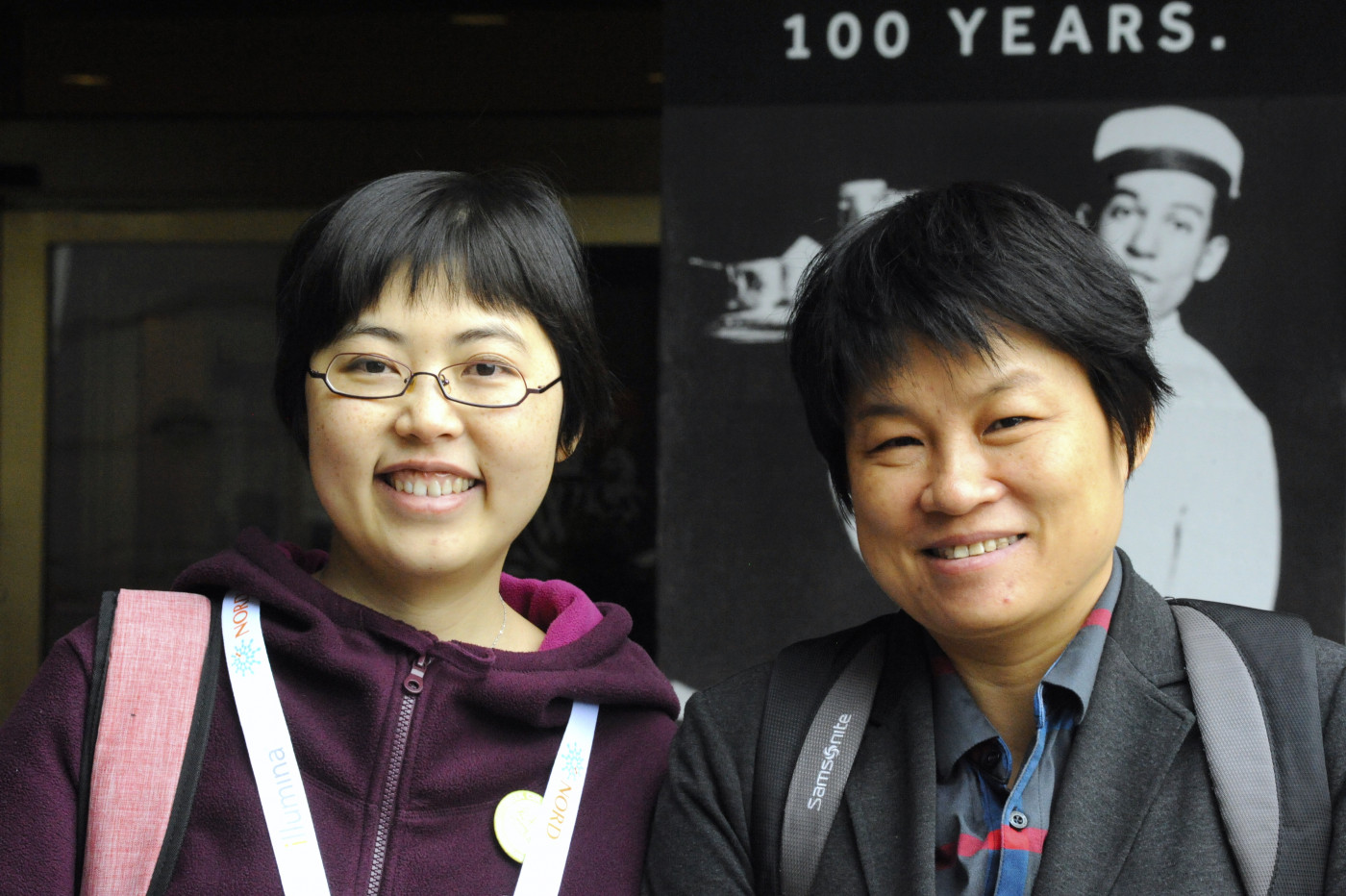Chinese PH Patients Form Beijing-based Advocacy Group

Huang Huan and Li Rong, founders of China's iSEEK Pulmonary Hypertension Hope Center in Beijing. (Photo by Larry Luxner)
Pulmonary hypertension (PH) patients in China, the world’s most populous nation, finally have their own advocacy organization.
The iSEEK Pulmonary Hypertension Hope Center, whose website is available only in Chinese for the moment, is located in the Xicheng district of Beijing, China’s capital city. It is run by Huan Huang, who co-founded the nonprofit group with film producer Rong Li.
More than 5,000 of China’s 1.4 billion inhabitants have been officially diagnosed with PH. But Huang said the actual number may be closer to one million if cases linked to congenital heart disease and other chronic conditions are included in the total.
Huang spoke to Pulmonary Hypertension News on the sidelines of the 2018 NORD Rare Diseases & Orphan Products Breakthrough Summit in Washington, D.C. (Oct. 15-16), an event hosted by the National Organization for Rare Diseases, which iSEEK recently joined.
“Diagnosing PH is not easy. When I was a high-school student, I was misdiagnosed with asthma,” said Huang, 36, who eventually was evaluated by experts and properly diagnosed with pulmonary arterial hypertension (PAH) in 2003.
“But medications proved ineffective for me, so in 2011, I became only the third person in China to get a lung transplant. Back then, there weren’t many patients willing to get a lung transplant, because of the high prices, and most doctors did not think it was an effective way to cure the disease,” Huang added.
Since then, about 50 more Chinese with PH have received new lungs, said Huang. Three years after her initial surgery, however, Huang needed another transplant.
“Because of chronic rejection, I had to get a second transplant in 2014,” said Huang, who works at a trading company arranging international meetings and consultations. “During my first transplant, I became infected with hepatitis C. At that time, Chinese doctors had no experience with patients with hepatitis C needing a second transplant.”
Interested in PH research? Check out our forums and join the conversation!
Huang said the Pulmonary Hypertension Association, headquartered in Silver Spring, Maryland, and a similar organization in Japan helped her find suitable medications; eventually she had her second lung transplant in Wuxi, located in China’s Jiangsu province.
“The incidence of PH is the same in China as in other countries, but the problem is that diagnosis is really difficult, and in rural areas, the doctors don’t know what PH is,” she said.
Complicating the problem is the difficulty in finding appropriate therapies for the disease. For instance, Huang mentioned that Tracleer (bosentan), manufactured by Actelion Pharmaceuticals, retails in China for up to $30,000 per year — double the average Chinese worker’s annual salary.
“In China, most PH medications are not covered by insurance, so prices are too high to be affordable,” Huang said. “That’s why most patients cannot take the recommended dosage as the doctor prescribes. So most of the time, we take half the pill or even one-quarter. Even me, I only took three months of the recommended dosage.”
Beijing is one of the most polluted cities on Earth, though no specific research exists on the relationship between PH and air pollution, said Huang, who attended the PHA’s 2018 International PH Conference in Orlando, Florida.
“At the conference, we learned that there are many treatments in the U.S., and much better than in China — and patients don’t have to struggle financially,” she said. “Most of the medications are covered by insurance. So, even though prices in the U.S. are very high, thanks to insurance coverage patients don’t have to pay it by themselves.”
Huang launched iSEEK in 2011. Thanks to its advocacy efforts, prices for therapies to treat the disease have dropped. The organization also creates videos to spread awareness of the disease among ordinary Chinese, who are largely uninformed about PH.
Since the organization’s establishment, an average 20 to 30 of its members have died every year from PH and its complications.
“Only a few hospitals in Beijing, Shanghai and Guangzhou can diagnose the disease,” Huang said. “Many patients are coming to Beijing for diagnosis, so I began to meet more and more of them. We can help them with practical information like finding places to stay. It’s not easy for patients in rural areas to come to Beijing, especially if all the hotels near the hospital are full.”








